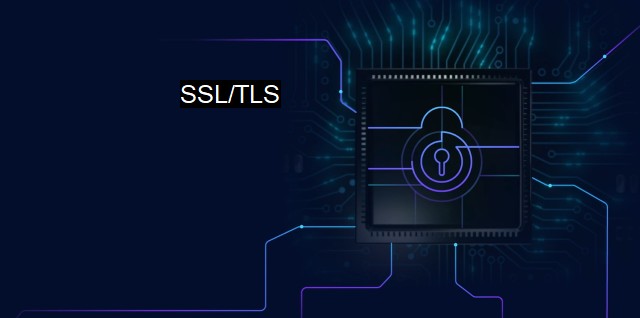What is SSL/TLS?
Ensuring Secure Communication on the Web: Expanding on the Vital Role of SSL/TLS Protocols in Cybersecurity and Antivirus Software Protection
SSL/TLS, also known as Secure Sockets Layer and Transport Layer Security respectively, are cryptographic protocols designed with the primary aim of maintaining security over networks, specifically, internet communication. They operate a field that pertains to the practices, processes, and technologies devised to protect networks, systems, and data from digital attacks, damages, or unauthorized access. Both SSL and TLS are utilized widely to safeguard the interactions between web servers and web browsers, ensuring all transmitted data remains private and integral.SSL came into existence around the mid-1990s, courtesy of Netscape. This protocol's initial release was SSL 2.0, which swiftly paved the way for SSL 3.0 because of several discovered vulnerability issues. TLS was developed as a more advanced and more secure version of SSL 3.0, effectively inheriting the mantle. While TLS is essentially a newer incarnation, most people colloquially refer to the latest TLS versions as SSL. The versions currently in use notably include TLS 1.2 and 1.3.
These protocols work by encrypting information making it unreadable to anyone but the intended recipient. This encryption makes SSL/TLS essential for protecting sensitive information as it moves across the internet. They ensure the data sent between systems or over networks cannot be read or exploited when an attacker intercepts it. The information, like credit card numbers or personal data, is transformed into an undecipherable format that can only be returned to a readable state with the correct encryption key.
SSL/TLS protocols operate using asymmetric Public Key Infrastructure (PKI) system, an encryption system encompassing two 'keys.' This system utilizes one key for encryption (public key) and another for decryption (private key). To elaborate, if a web browser wants to send information to a web server securely, an SSL certificate, incorporating the server's public key, will be employed to encrypt the data before sending it. The server will then use its private key to decrypt that information.
SSL certificates facilitate this secure exchange of information. These digital certificates bind a cryptographic key to the details of an organization. When installed on a web server, they activate the HTTPS protocol allowing secure connections. These certificates also affirm the identity of the servers we communicate with, thus ensuring the user connects only with authenticated websites and not malicious ‘phishing’ ones.
In the context of antivirus, SSL/TLS operations are paramount. Some distinctive threats that SSL/TLS are designed to help protect against include man-in-the-middle (MitM) attacks, where unauthorized entities can eavesdrop, intercept, or alter the communicated data. SSL/TLS also contribute to guarding against phishing attempts as these certificates make it considerably more challenging for malicious actors to impersonate legitimate websites.
To summarize, SSL/TLS are cryptographic protocols playing an immense role in data security, spanning across all forms of digital communication. As we move into an increasingly digital era, these mechanisms will continue to be pivotal in ensuring user confidence in the integrity and safety of the web, particularly in demographic groups that involve online monetary transactions. Meanwhile, the cybersecurity field will continue to evolve in its quest to counter the relentless barrage of threats and to maximize user security and privacy online.

SSL/TLS FAQs
What is SSL/TLS?
SSL/TLS (Secure Sockets Layer/Transport Layer Security) is a protocol used to secure online communication and encrypt data between a client and a server. It ensures that sensitive information shared between parties remains private and secure, preventing eavesdropping, data tampering, and information theft.Why is SSL/TLS important in cybersecurity?
SSL/TLS is essential in cybersecurity because it provides a secure and safe online environment for sensitive information. It helps prevent data breaches, unauthorized access, and other malicious activities by encrypting data and verifying the identity of the communicating parties. This makes SSL/TLS a critical aspect of online security and a necessity for any website, server, or application that deal with sensitive data.How does SSL/TLS work?
SSL/TLS works by establishing a secure connection between a client and a server through a process called handshaking. During this process, both parties agree on encryption protocols, exchange digital certificates, and verify each other's identity. Once the handshake is completed, the data is encrypted using the agreed-upon encryption algorithms and sent over the internet.What is the difference between SSL and TLS?
SSL and TLS are both encryption protocols used for securing online communication, but TLS is the newer and more secure version. SSL was the original protocol developed in the 1990s and had known security vulnerabilities that were addressed in later versions. TLS was developed in the 2000s and is an enhanced version of SSL. TLS provides better security features, improved encryption algorithms, and stronger key exchange protocols. As such, TLS has become the preferred protocol for securing online communication.Related Topics
Transport Layer Security (TLS) Secure Sockets Layer (SSL) Public Key Infrastructure (PKI)
| | A | | | B | | | C | | | D | | | E | | | F | | | G | | | H | | | I | | | J | | | K | | | L | | | M | |
| | N | | | O | | | P | | | Q | | | R | | | S | | | T | | | U | | | V | | | W | | | X | | | Y | | | Z | |
| | 1 | | | 2 | | | 3 | | | 4 | | | 7 | | | 8 | | |||||||